By Steve Laser and Craig Nicol reporting from Tokyo, Japan
When autumn is in the air our thoughts turn to Japan and the Tokyo Motor Show. Your intrepid editor has attended the press days for this biennial extravaganza ten times during the past 22 years. During that time we’ve seen hundreds of concept vehicles and new models introduced. Some have been promoted well in advance of the show while others are complete surprises.
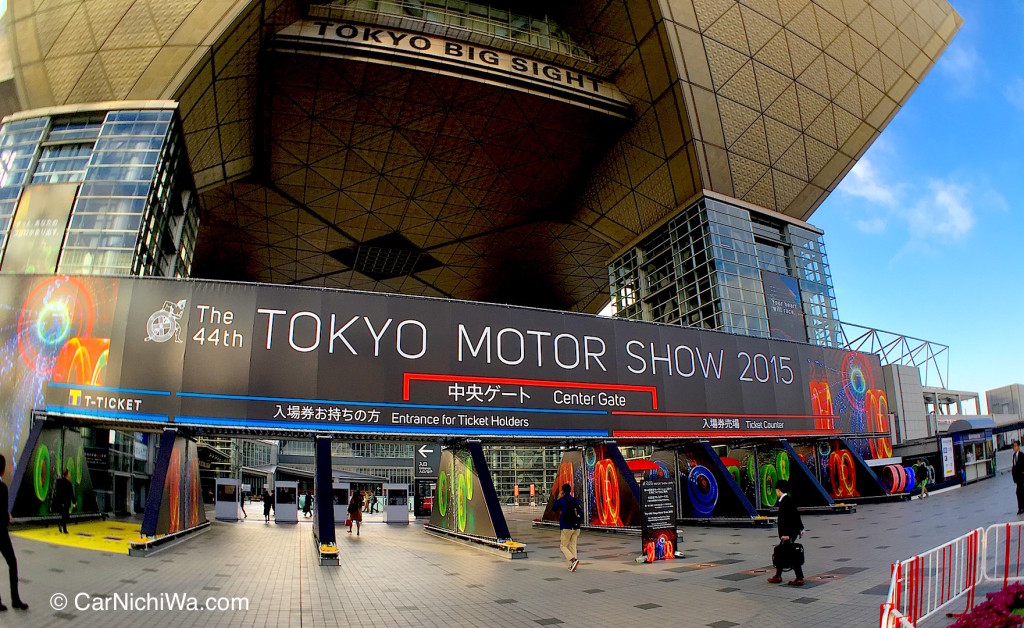 This year’s show staged at the massive Tokyo Big Sight convention complex lived up to the theme “Your heart will race” due to the large number of debuts. Yet we also ran out of breath running from one press conference to another inside the huge halls separated by moving sidewalks like an airport terminal.
This year’s show staged at the massive Tokyo Big Sight convention complex lived up to the theme “Your heart will race” due to the large number of debuts. Yet we also ran out of breath running from one press conference to another inside the huge halls separated by moving sidewalks like an airport terminal.
We captured the heat of the moment in this video as we waited in line for the start of the first press day with fellow journalists from across the globe. Everyone knew exactly where they were going when the gates opened making a beeline to the press room, the first press conference – or the restroom after drinking too much coffee for breakfast.
We’re on the home turf of Japanese automakers, so we’ll begin our coverage with the Honda, Lexus, Nissan and Toyota displays.
Honda
The big news at the Honda stand was the introduction of the Clarity Fuel Cell vehicle that will compete with the Toyota Mirai. Looking a bit like a futuristic Accord, Honda says the car’s fuel cell stack has been downsized by 33 percent compared to the previous FCV while its output of more than 100kW and density of more than 3.1kW/L is about a 60 percent improvement.
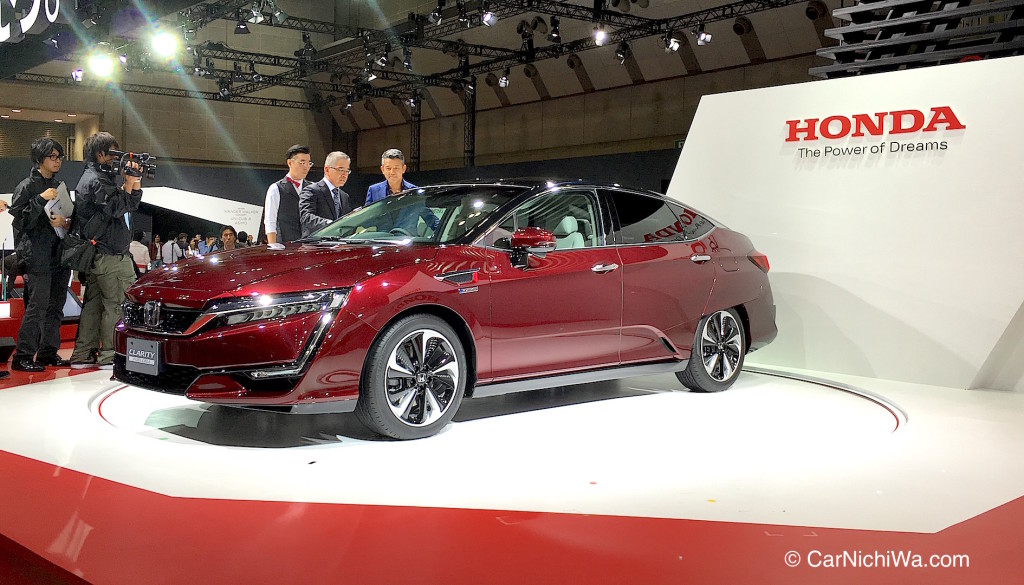 Honda says the fuel cell powertrain is now as compact as a V6 engine allowing it to be consolidated under the hood of a sedan “for the first time in the world.” The five-passenger cabin offers an extra seating position versus the four-passenger Mirai. With an estimated refill time of three minutes and a cruising range of 700 km, Honda says this EV will be as easy to drive as a conventional gasoline-powered vehicle.
Honda says the fuel cell powertrain is now as compact as a V6 engine allowing it to be consolidated under the hood of a sedan “for the first time in the world.” The five-passenger cabin offers an extra seating position versus the four-passenger Mirai. With an estimated refill time of three minutes and a cruising range of 700 km, Honda says this EV will be as easy to drive as a conventional gasoline-powered vehicle.
Our video of the press conference includes Honda President and CEO Takahiro Hachigo’s remarks in Japanese.
In this video, we take a walk through the center of the Honda display showcasing the automaker’s new models and concepts.
Honda says it was one of the first automakers to begin focusing attention to hydrogen “as a possible solution for issues such as global warming and depletion of fossil fuels.” In 2002, the Honda FCX became the first fuel cell vehicle to be certified by the U.S. Environmental Protection Agency (EPA) and the California Air Resources Board (CARB).
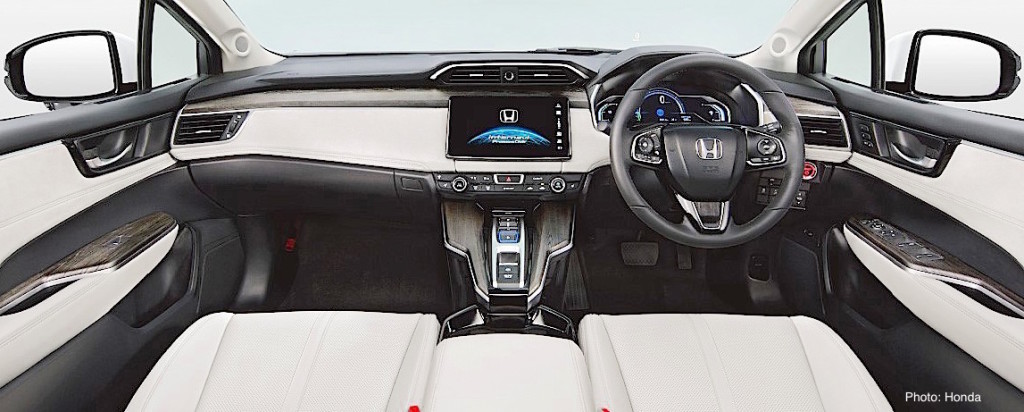 In 2008, Honda became the first automaker to begin leases of the FCX Clarity, which featured a sedan-type package. Honda says the all-new Clarity Fuel Cell was developed based on data related to the ease of use and driving performance of these previous Honda FCVs.
In 2008, Honda became the first automaker to begin leases of the FCX Clarity, which featured a sedan-type package. Honda says the all-new Clarity Fuel Cell was developed based on data related to the ease of use and driving performance of these previous Honda FCVs.
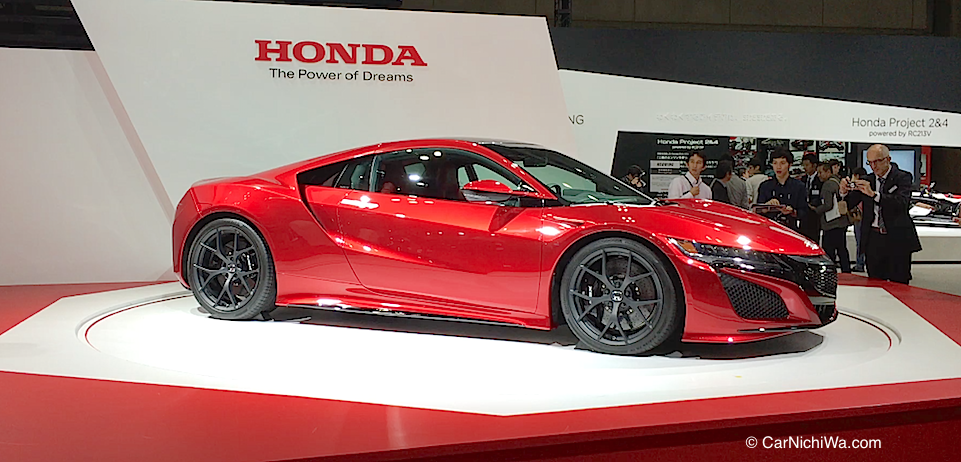 Shifting gears to sports cars, Honda displayed the home-market version of the new NSX that will be sold as a Honda in Japan (the Acura brand is not available in Japan). The NSX features a new direct-injection V6 twin turbo engine in a mid-ship layout plus a three-motor hybrid system.
Shifting gears to sports cars, Honda displayed the home-market version of the new NSX that will be sold as a Honda in Japan (the Acura brand is not available in Japan). The NSX features a new direct-injection V6 twin turbo engine in a mid-ship layout plus a three-motor hybrid system.
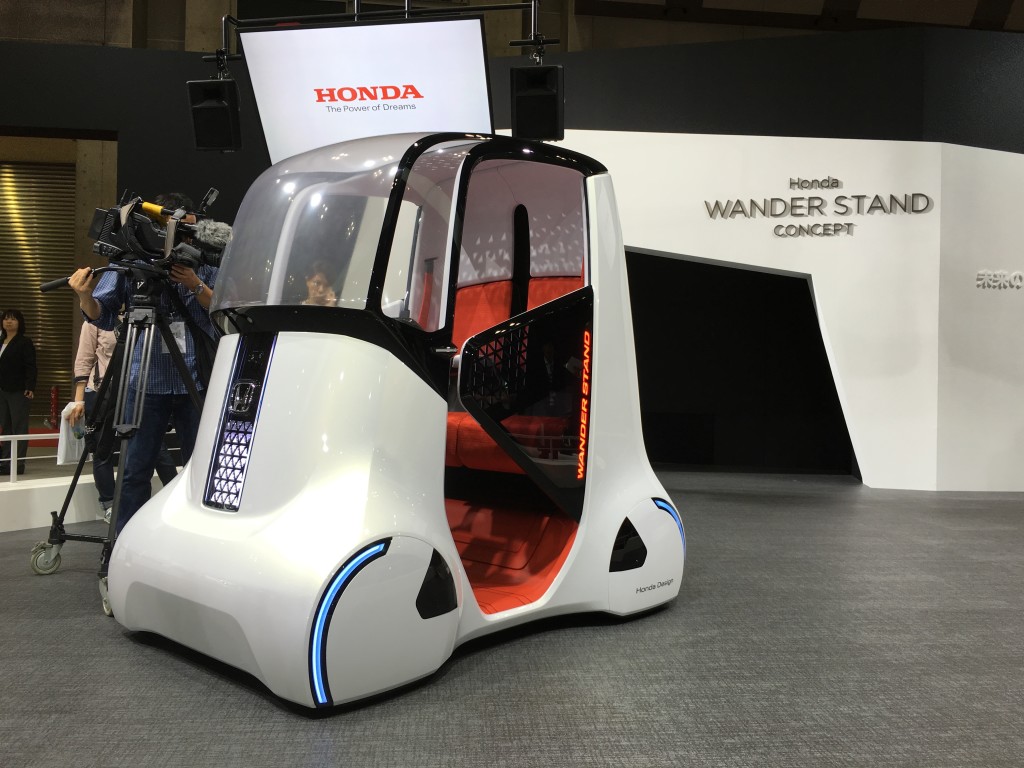 Honda’s slogan, “The Power of Dreams,” fits nicely with this new far-out concept dubbed “Wander Stand.” Honda says that two adults can ride side-by-side “experiencing a completely new way to drive.” Narrow roads are no problem since Honda’s Omni Traction Drive System is said to allow “complete freedom of movement forwards, backwards, laterally and diagonally” while also including automatic driving modes.
Honda’s slogan, “The Power of Dreams,” fits nicely with this new far-out concept dubbed “Wander Stand.” Honda says that two adults can ride side-by-side “experiencing a completely new way to drive.” Narrow roads are no problem since Honda’s Omni Traction Drive System is said to allow “complete freedom of movement forwards, backwards, laterally and diagonally” while also including automatic driving modes.
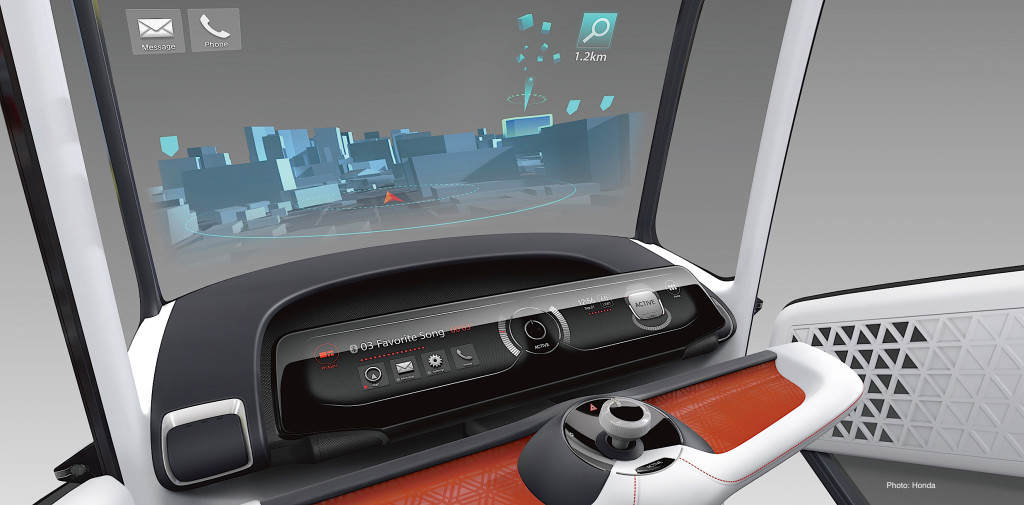 Honda says that matching the individual taste of the driver, the display offers a wide range of information. The interior features a blend of Japanese tradition and high tech. The seat covering is said to be inspired by the Nishijin district in Kyoto to provide a relaxing environment.
Honda says that matching the individual taste of the driver, the display offers a wide range of information. The interior features a blend of Japanese tradition and high tech. The seat covering is said to be inspired by the Nishijin district in Kyoto to provide a relaxing environment.
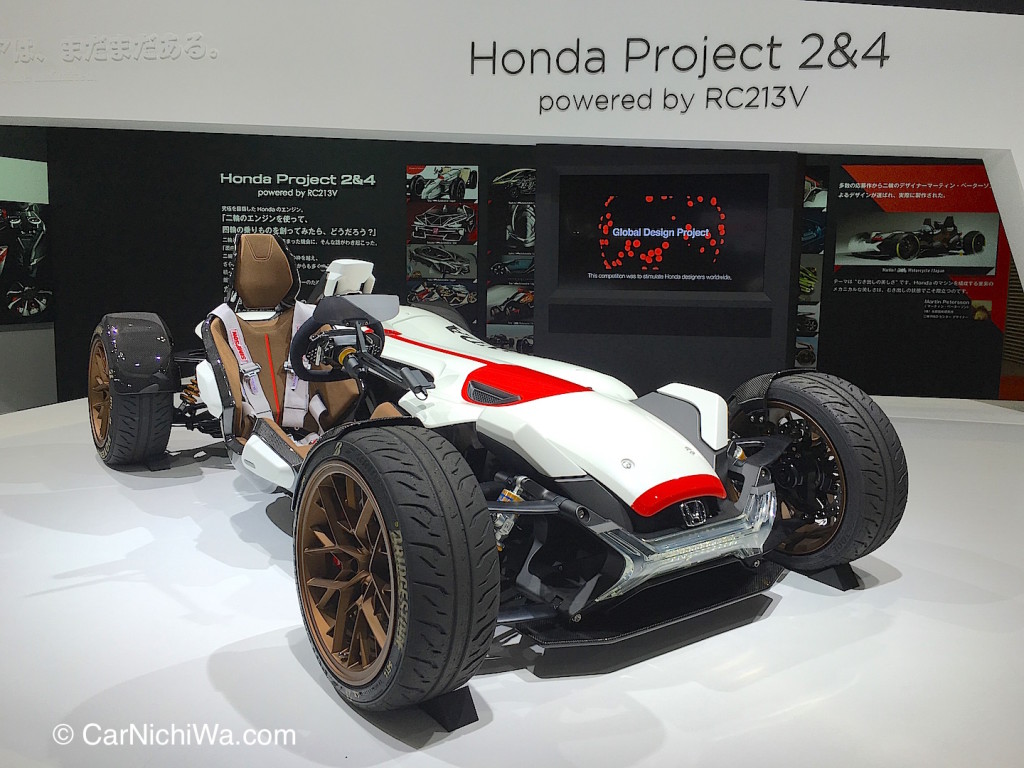 Following its debut in Frankfurt, the RC213V-S is a MotoGP-class racing machine modified for riding on public roads.
Following its debut in Frankfurt, the RC213V-S is a MotoGP-class racing machine modified for riding on public roads.
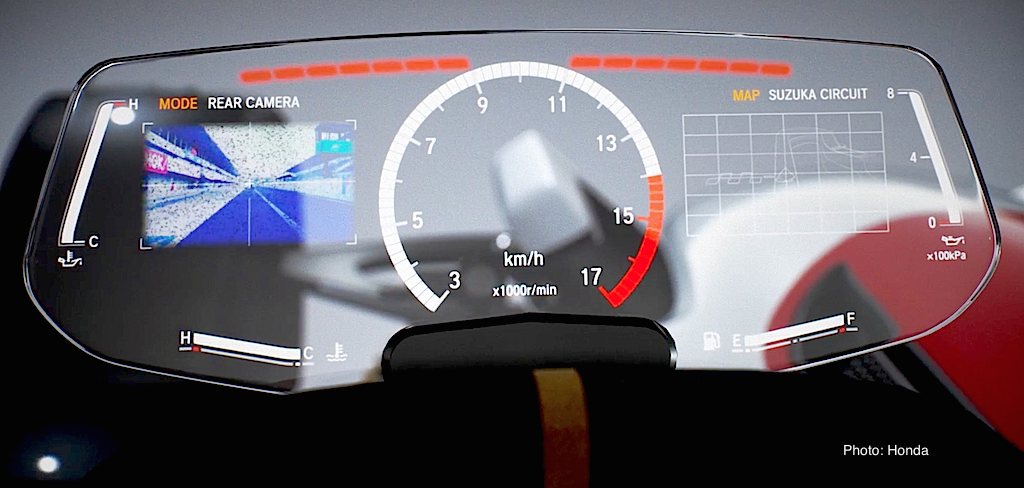 While this dream machine would look great wherever it goes, it looks like RC213V-S is going to remain a concept vehicle … for now.
While this dream machine would look great wherever it goes, it looks like RC213V-S is going to remain a concept vehicle … for now.
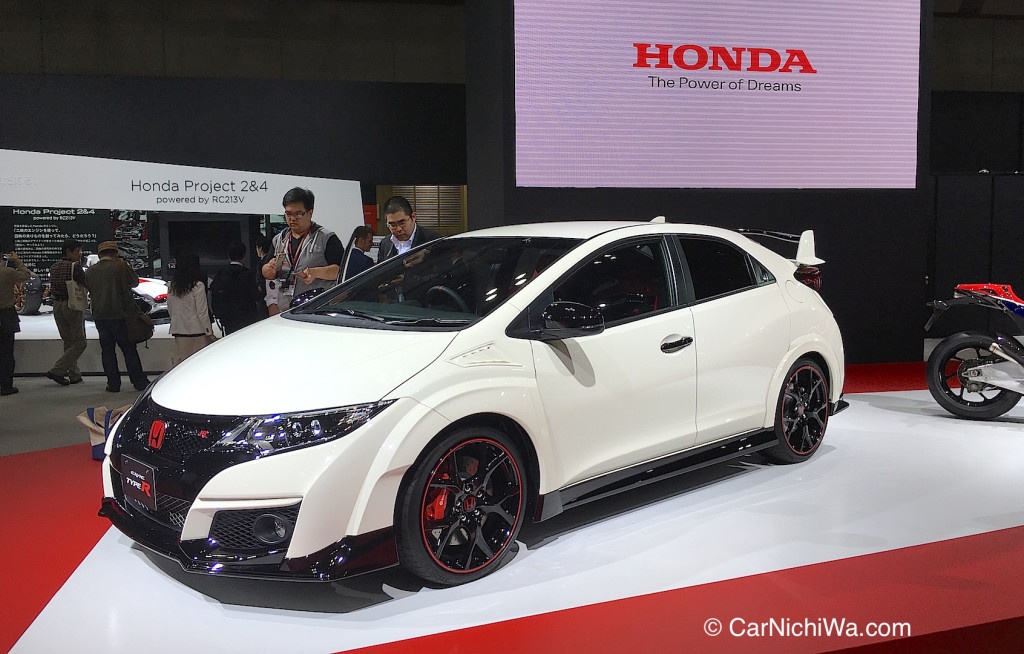 Meanwhile, this sporty Honda Civic Type R will be coming to Japan soon and we expect to see it reach other markets, including America.
Meanwhile, this sporty Honda Civic Type R will be coming to Japan soon and we expect to see it reach other markets, including America.
Lexus
While Lexus vehicles have been on sale in the U.S. for a quarter century, the brand is still relatively new in Japan where it’s celebrating its tenth anniversary. Lexus surprised the crowd by revealing a completely new concept at the show called LF-FC.
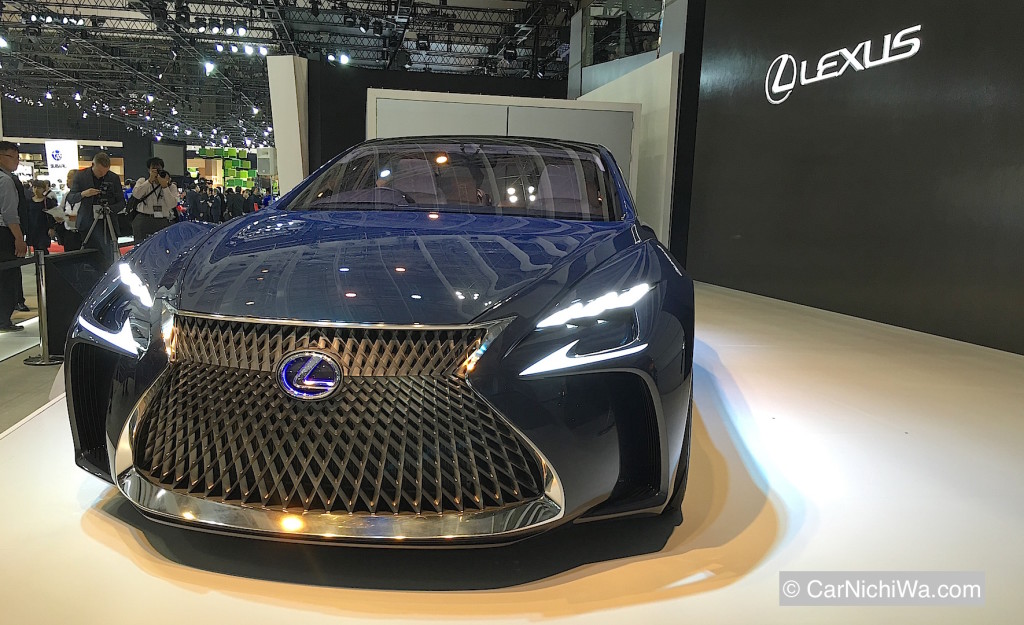 Lexus said this new concept offers “a peek into the design and technology direction of the brand’s future flagship sedan.” If the next-generation LS looks as gorgeous as this concept, Leuxs will have little difficulty finding buyers.
Lexus said this new concept offers “a peek into the design and technology direction of the brand’s future flagship sedan.” If the next-generation LS looks as gorgeous as this concept, Leuxs will have little difficulty finding buyers.
The second surprise occurred when we heard that this concept is designed as a Fuel Cell EV! In other words, this is kind of like a Toyota Mirai on steroids following a Hollywood makeover.
Lexus let us stand on the same platform as TV news crews so we could capture its press conference on our video. Tokuo Fukuichi, Lexus International President, addressed the crowd in Japanese while we listened on a headset to an English translator.
Here’s a turntable spin that we captured on video of the four-door coupe style LF-FC concept.
To highlight the technology under the skin, Lexus displayed this remarkably detailed powertrain cutaway. Take a look at the exquisite detail behind the stunning spindle grille in our video.
At the heart of the LF-FC is a high output fuel cell power system that energizes the rear wheels, and also sends power to two in-wheel motors in the front, making the LF-FC all-wheel-drive. Lexus says this system allows precise torque distribution control between the front and rear wheels.
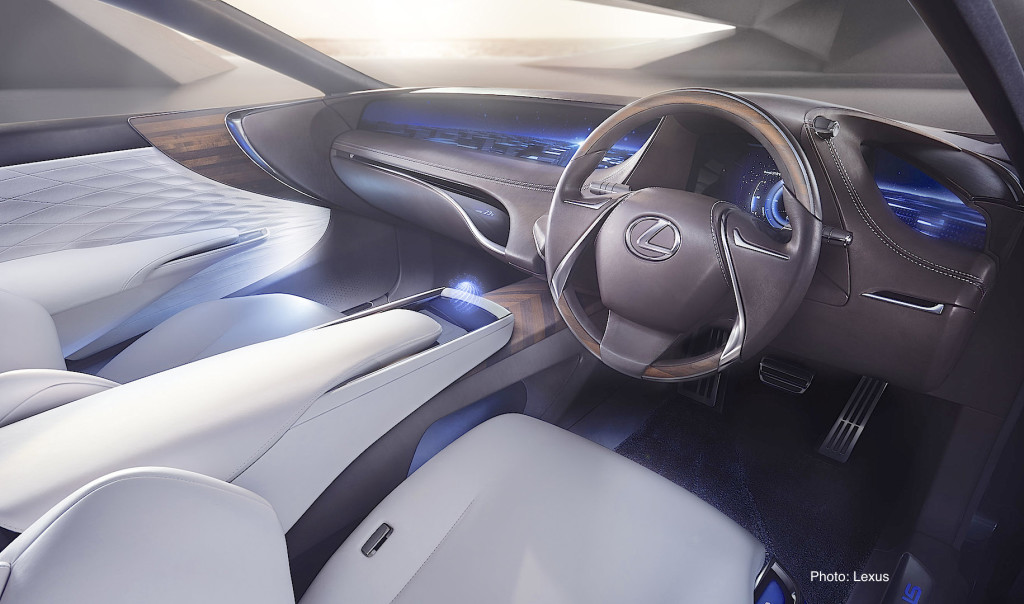 Lexus says the interior is designed to wrap its occupants in a comfortable yet futuristic environment, while providing the driver with a highly-functional cockpit. The cabin has been designed in two sections, top and bottom. The top conveys a sense of openness, allowing the driver to concentrate on the road ahead without feeling constrained. When seen at eye level, the front seats seem to be floating.
Lexus says the interior is designed to wrap its occupants in a comfortable yet futuristic environment, while providing the driver with a highly-functional cockpit. The cabin has been designed in two sections, top and bottom. The top conveys a sense of openness, allowing the driver to concentrate on the road ahead without feeling constrained. When seen at eye level, the front seats seem to be floating.
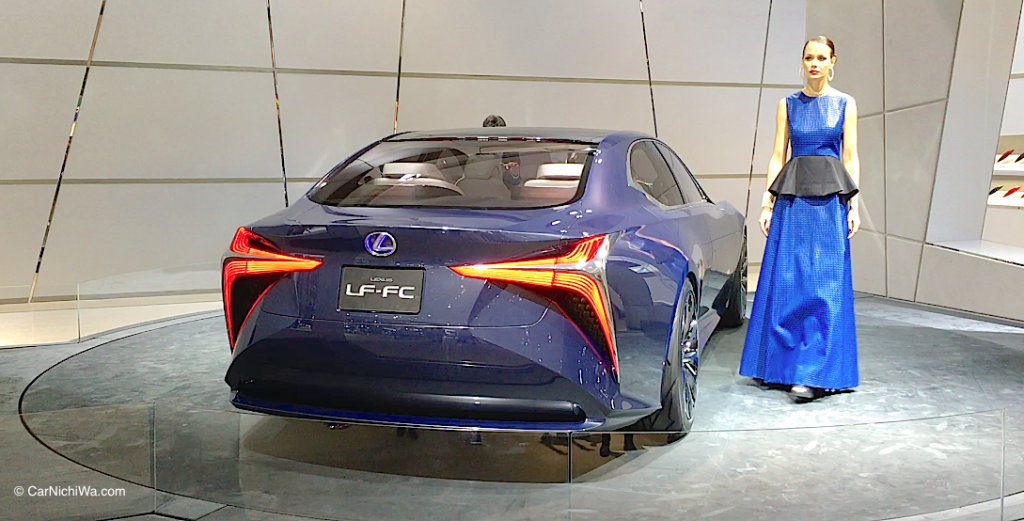 The rear view is highlighted by striking new taillights that adopt the same floating theme as the Daytime Running Lights up front. We hope to hear more from Lexus in the months ahead regarding its plans for a new flagship sedan and whether the brand will offer its own fuel cell EV in a car like this or perhaps one a bit smaller like the Mirai.
The rear view is highlighted by striking new taillights that adopt the same floating theme as the Daytime Running Lights up front. We hope to hear more from Lexus in the months ahead regarding its plans for a new flagship sedan and whether the brand will offer its own fuel cell EV in a car like this or perhaps one a bit smaller like the Mirai.
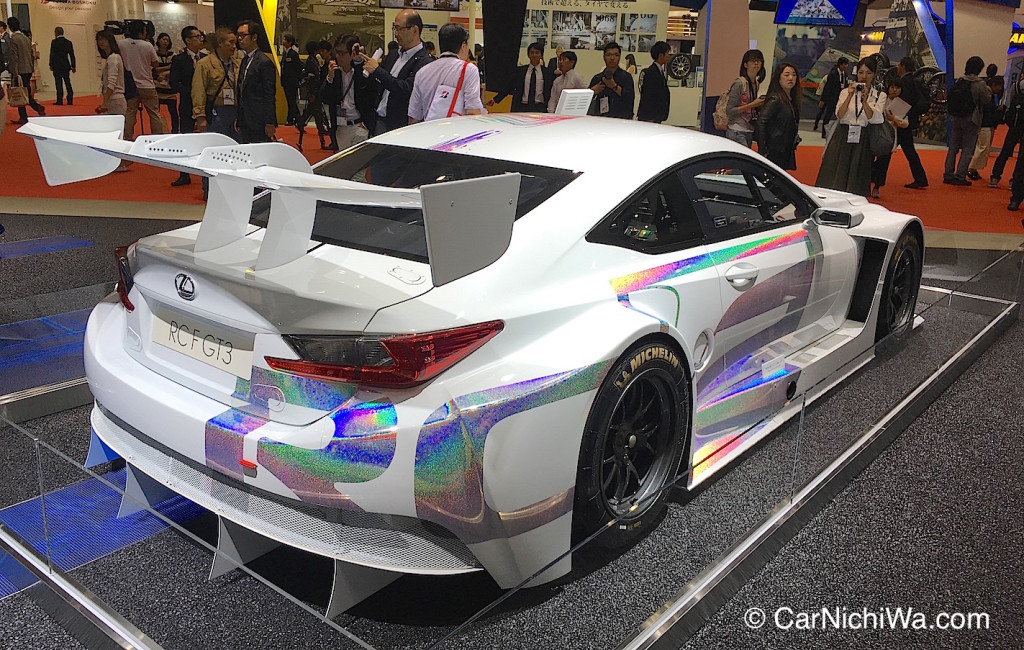 While the LF-FC concept is all about the potential future of a luxury sedan, Lexus showed its sporty side at the show with cars like this racy RC F GT3 concept. Stripped to racing specs, the widened, lowered coupe is said to weigh only 1,250kg and produce more than 540 horsepower from its V8 engine.
While the LF-FC concept is all about the potential future of a luxury sedan, Lexus showed its sporty side at the show with cars like this racy RC F GT3 concept. Stripped to racing specs, the widened, lowered coupe is said to weigh only 1,250kg and produce more than 540 horsepower from its V8 engine.
Nissan
Nissan grabbed the attention of journalists and auto show visitors alike with the surprise debut of its all-new IDS concept. While this may preview a next-generation Leaf, the concept also embodies Nissan’s vision of the future of autonomous driving.
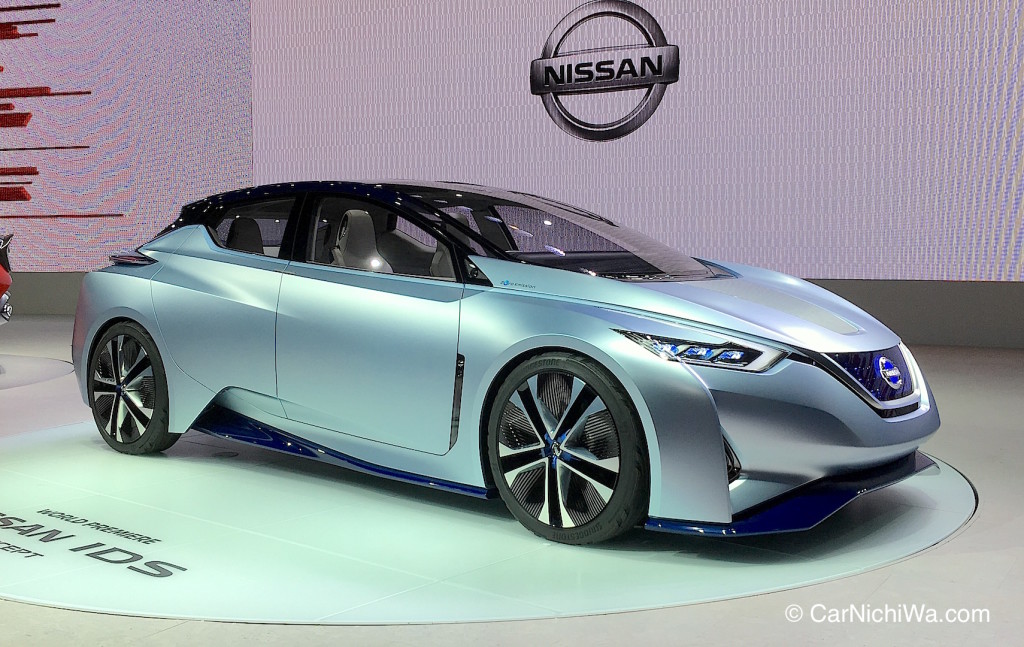 Nissan says that “Some have compared a future with autonomous drive to living in a world of conveyer belts that simply ferry people from point A to B, but the Nissan IDS Concept promises a very different vision of tomorrow. Even when the driver selects Piloted Drive and turns over driving to the vehicle, the car’s performance – from accelerating to braking to cornering – imitates the driver’s own style and preferences.”
Nissan says that “Some have compared a future with autonomous drive to living in a world of conveyer belts that simply ferry people from point A to B, but the Nissan IDS Concept promises a very different vision of tomorrow. Even when the driver selects Piloted Drive and turns over driving to the vehicle, the car’s performance – from accelerating to braking to cornering – imitates the driver’s own style and preferences.”
Here’s our video of the Nissan press conference led by Nissan’s President and CEO Carlos Ghosn who said, “Nissan’s forthcoming technologies will revolutionize the relationship between car and driver, and future mobility.”
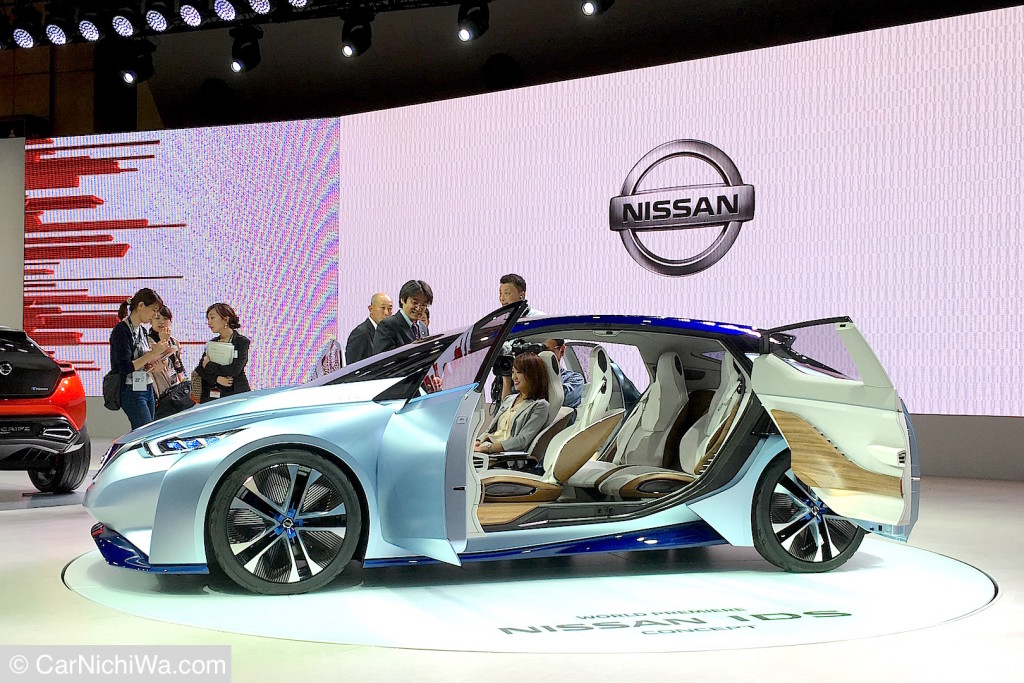 In Manual Drive mode, Nissan says the driver is in control. “The linear acceleration and cornering are pure and exhilarating. Yet behind the scenes, the Nissan IDS Concept continues to provide assistance. Sensors continually monitor conditions and assistance is available even while the driver is in control. In the event of imminent danger, Nissan IDS Concept will assist the driver in taking evasive action,” says the automaker.
In Manual Drive mode, Nissan says the driver is in control. “The linear acceleration and cornering are pure and exhilarating. Yet behind the scenes, the Nissan IDS Concept continues to provide assistance. Sensors continually monitor conditions and assistance is available even while the driver is in control. In the event of imminent danger, Nissan IDS Concept will assist the driver in taking evasive action,” says the automaker.
We follow Nissan’s new IDS concept in our video as it completes a quick lap of the display stand for the media.
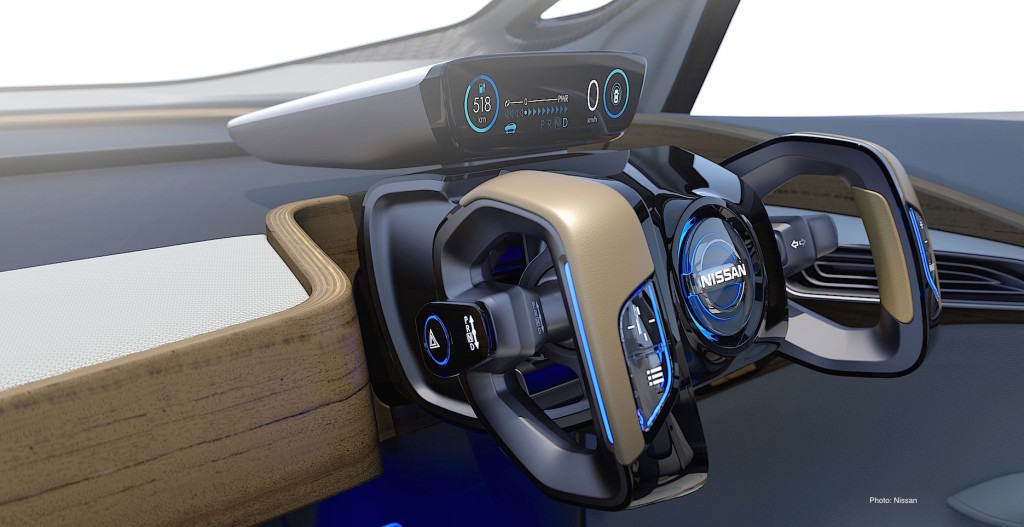 When the driver selects Manual Drive, the interior transforms to put the driver in control. All seats face forward, the steering wheel appears along with driving meters and a heads-up display that shows the route and other driving information.
When the driver selects Manual Drive, the interior transforms to put the driver in control. All seats face forward, the steering wheel appears along with driving meters and a heads-up display that shows the route and other driving information.
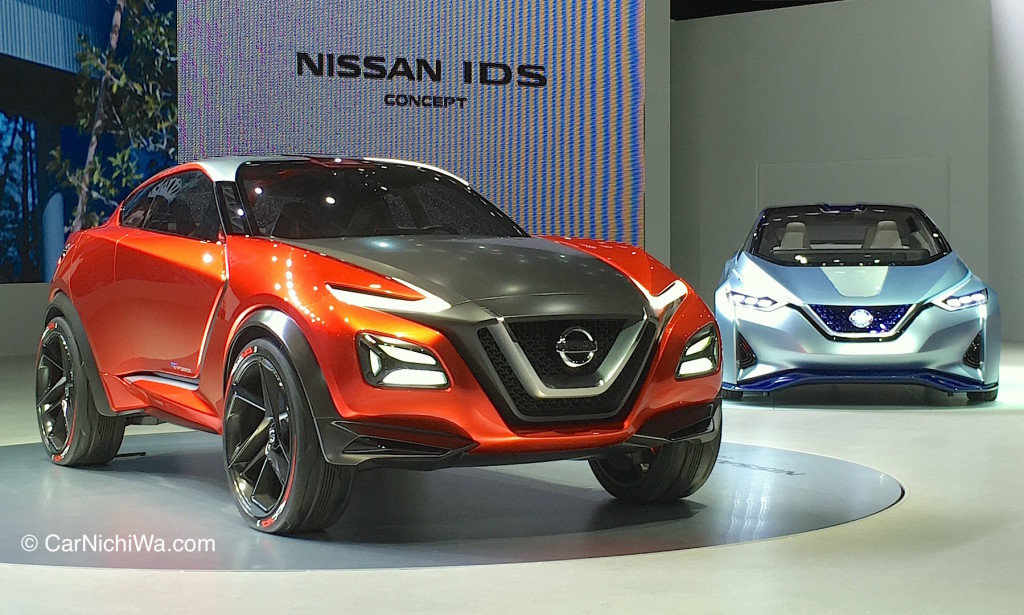 IDS shared the stage with Nissan’s Gripz concept that made its debut at the Frankfurt show. Conceived by Nissan designers in Europe and Japan, Gripz aims to blend the ability and practicality of a compact crossover with the excitement and performance of a sports car.
IDS shared the stage with Nissan’s Gripz concept that made its debut at the Frankfurt show. Conceived by Nissan designers in Europe and Japan, Gripz aims to blend the ability and practicality of a compact crossover with the excitement and performance of a sports car.
The exterior of the Gripz concept is guided by the “emotional geometry” body sculpting concept which depicts strong contrasts through the dynamic, tensional, yet edgy, surface. The interior has a “gliding wing” instrument panel, with an elegantly thin design.
Get a Gripz on this cool Nissan concept in a 360-degree view as we watch it spin on a turntable at the show.
Equipped with an EV-technology-based series hybrid system, Pure Drive e-Power, Nissan says Gripz delivers a smooth, refined and exhilarating driving experience with outstanding fuel efficiency. Within the system, an efficient gasoline engine powers the same electric motor used in the Nissan Leaf.
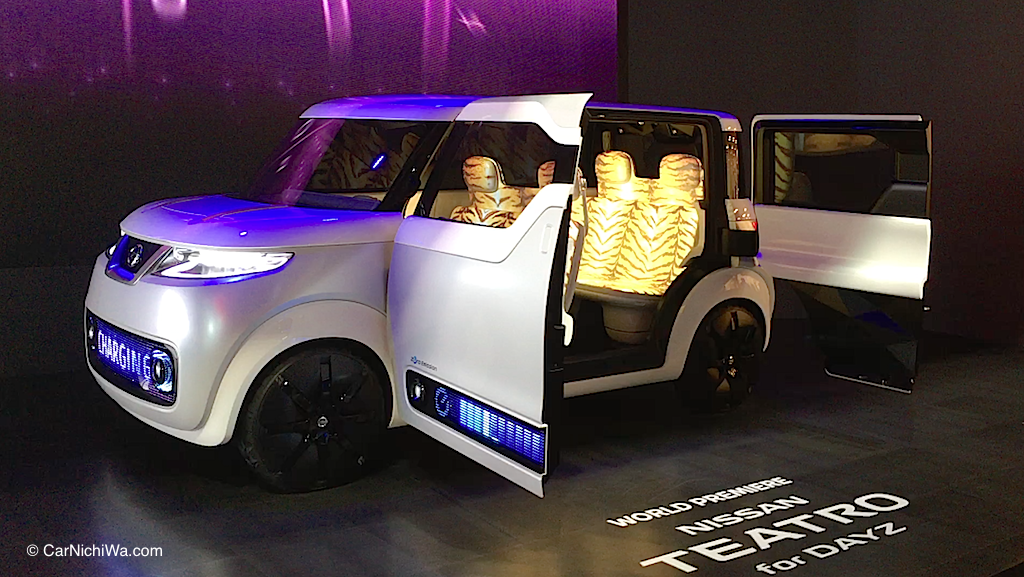 Nissan says its new Teatro for Dayz concept is a combination of mobile technologies unlike any previously imagined in a car. Combined with Nissan’s EV technology, it represents “a radical new way of thinking about how vehicles can be used.”
Nissan says its new Teatro for Dayz concept is a combination of mobile technologies unlike any previously imagined in a car. Combined with Nissan’s EV technology, it represents “a radical new way of thinking about how vehicles can be used.”
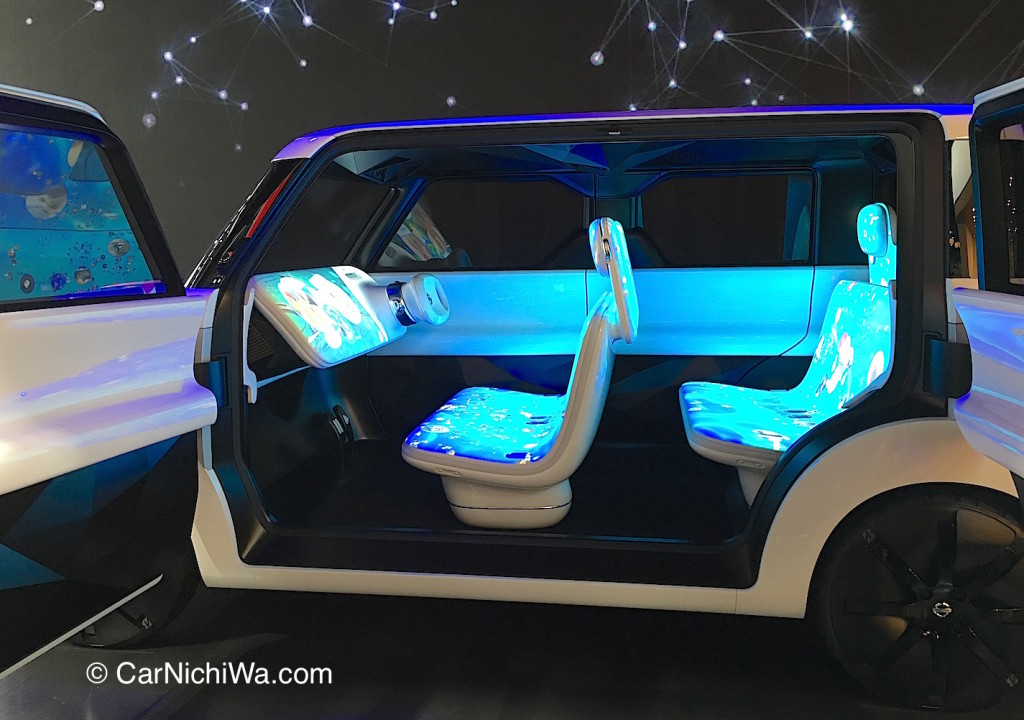 The generation, called “share natives,” can connect with their friends in the Teatro for Dayz.
The generation, called “share natives,” can connect with their friends in the Teatro for Dayz.
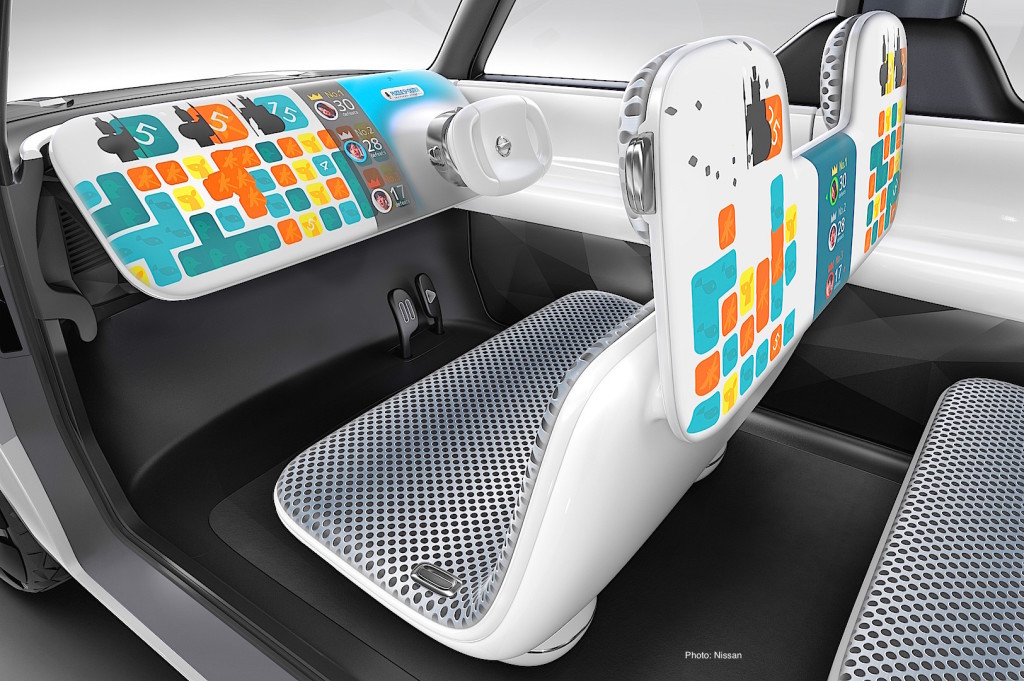 When the car is in drive mode, meters, controls and maps appear on a pure white instrument panel. When parked, Teatro for Dayz transforms into a new device. The entire interior becomes a live display.
When the car is in drive mode, meters, controls and maps appear on a pure white instrument panel. When parked, Teatro for Dayz transforms into a new device. The entire interior becomes a live display.
Teatro for Dayz’s plain exterior, too, serves as a canvas for ideas. It’s outfitted with LED screens that enable further self-expression. Any experience in or around the car can be shared instantly via an onboard camera. All the while, the EV battery keeps smartphones and other devices juiced up.
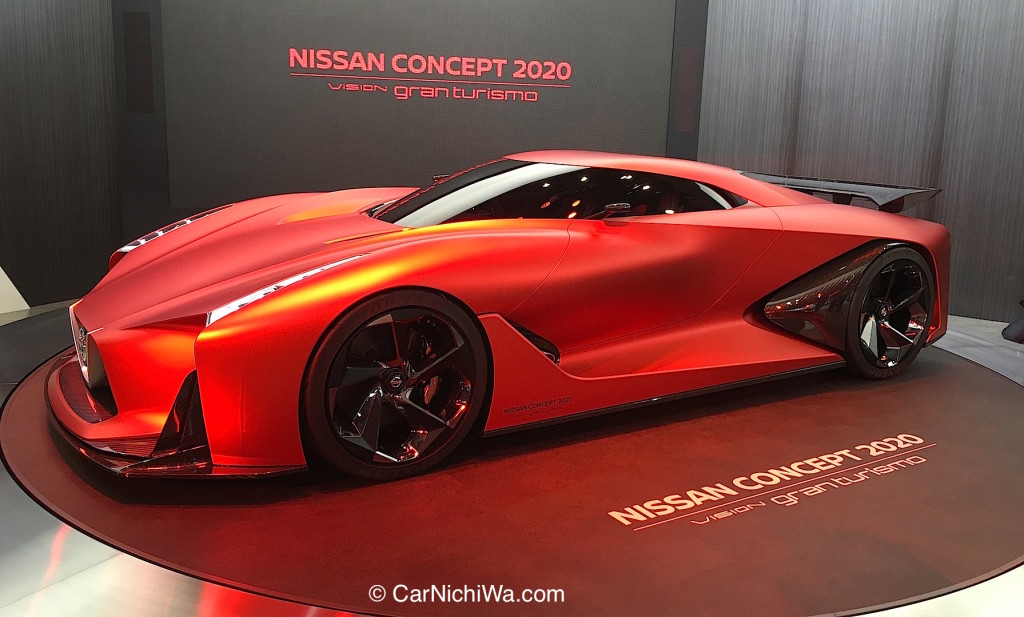 Speaking of juiced, Nissan’s Concept 2020 Vision Gran Turismo, a concept supercar developed in conjunction with Polyphony Digital Inc., the creators of the racing video game Gran Turismo for PlayStation, is designed to further increase Nissan’s presence in the game and beyond.
Speaking of juiced, Nissan’s Concept 2020 Vision Gran Turismo, a concept supercar developed in conjunction with Polyphony Digital Inc., the creators of the racing video game Gran Turismo for PlayStation, is designed to further increase Nissan’s presence in the game and beyond.
The latest creation in the Vision Gran Turismo Project was unveiled at Goodwood Festival of Speed 2014 in the U.K. In new Fire Knight red and featuring a new spin on the V-Motion grille, Nissan says the concept is “a real-world embodiment of a virtual car,” through which gamers around the world experience Nissan’s dynamic performance and innovation.
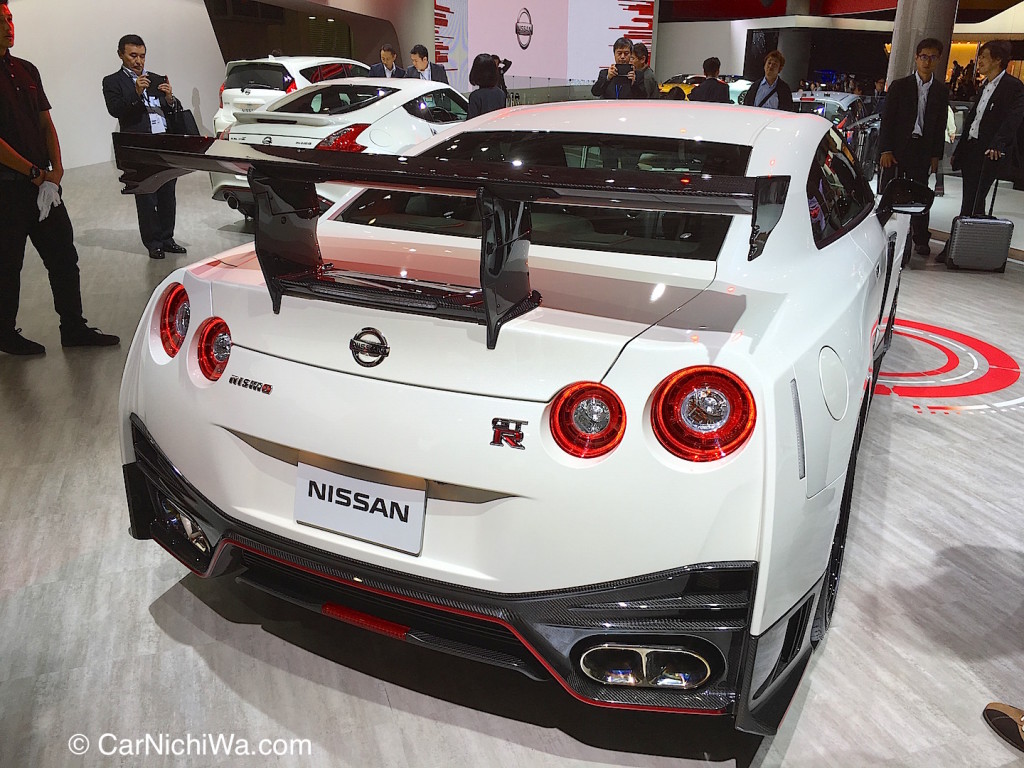 The Nissan exhibit also featured a tempting array of its current lineup for the Japanese market including this GTR Nismo edition that was parked next to a Fairlady Z (370Z) Nismo.
The Nissan exhibit also featured a tempting array of its current lineup for the Japanese market including this GTR Nismo edition that was parked next to a Fairlady Z (370Z) Nismo.
Toyota
Toyota had a huge display at the Tokyo Motor Show this year filled with concept vehicles and the latest production models. The one that really caught our attention was this small yellow sporty car on the stage.
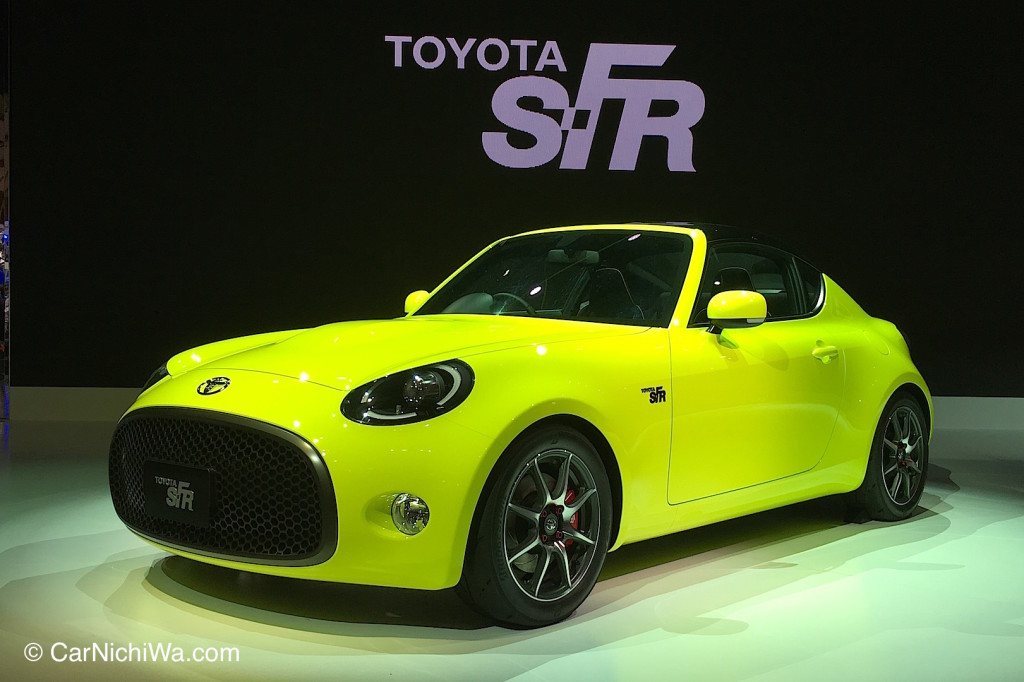 In the spirit of classic Toyotas like the Sports 800 and MR2, the new S-FR concept continues the heritage of Toyota’s fun-to-drive lightweight sports cars. Crafted as an entry-level model, Toyota says the concept emphasizes responsiveness, and aims to make a whole new generation “fall in love with driving.” It’s a fitting tribute to Sports 800 as it celebrates its 50th anniversary this year.
In the spirit of classic Toyotas like the Sports 800 and MR2, the new S-FR concept continues the heritage of Toyota’s fun-to-drive lightweight sports cars. Crafted as an entry-level model, Toyota says the concept emphasizes responsiveness, and aims to make a whole new generation “fall in love with driving.” It’s a fitting tribute to Sports 800 as it celebrates its 50th anniversary this year.
We got lucky a second time as Toyota let us camp out with the news cameras on an elevated platform so we could record the press conference on our video. Be sure to watch as Toyota President Akio Toyoda introduces a surprise guest.
S-FR’s long nose and wide stance make for an “archetypal sports car profile, while the familiar roundness of its frame inspires a feeling of closeness,” says Toyota. “The simple and modern finish of the interior rounds off a design that stresses approachable simplicity while conveying the vehicle’s performance and sporty spirit.”
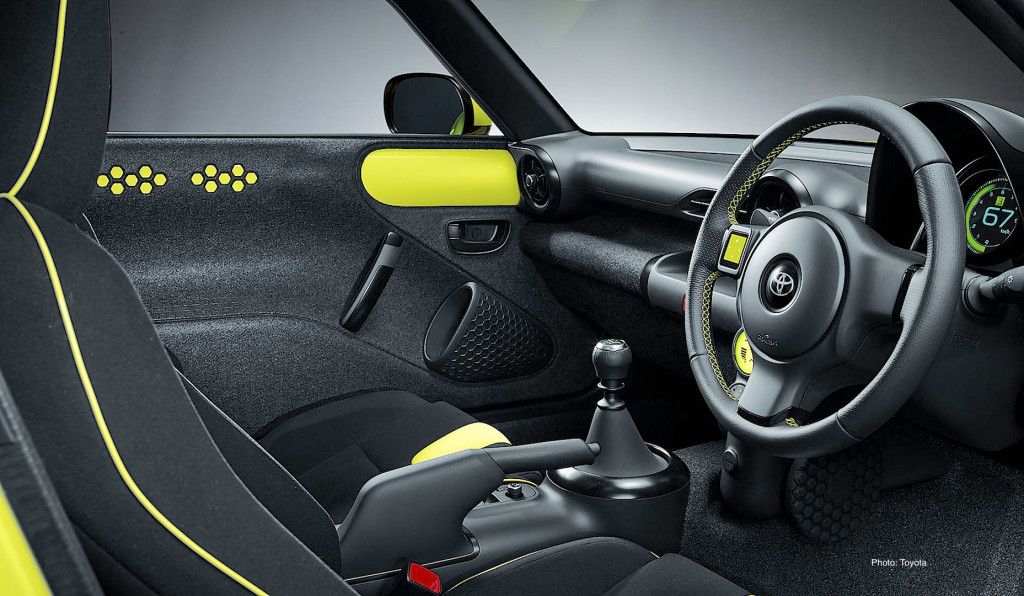 We really dig the S-FR and we’re delighted to say that it looks great in person. We’re hoping that Toyota decides to bring the concept to a U.S. auto show.
We really dig the S-FR and we’re delighted to say that it looks great in person. We’re hoping that Toyota decides to bring the concept to a U.S. auto show.
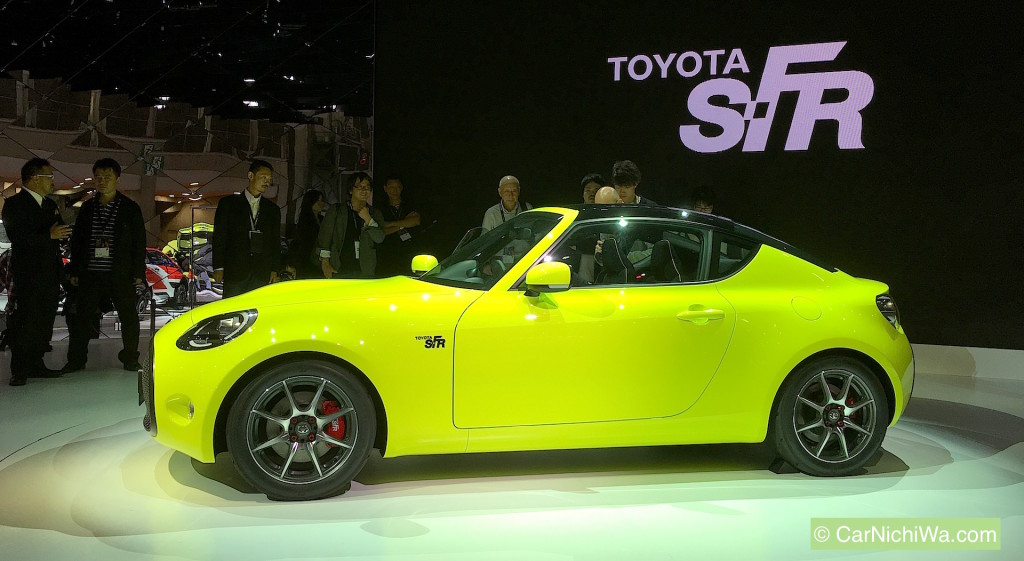 We know that S-FR is a rear-wheel-drive car, yet we still don’t know what’s under the hood. There was no mention of a potential powertrain during the press conference or in the supporting press materials.
We know that S-FR is a rear-wheel-drive car, yet we still don’t know what’s under the hood. There was no mention of a potential powertrain during the press conference or in the supporting press materials.
S-FR was conceptualized as the kind of vehicle that “attracts its own die-hard fan base, whose members love driving and customizing it.” Not only do we wish Toyota would put it into production, but if they do, we really hope to see it in the U.S. as a Scion (or a Toyota).
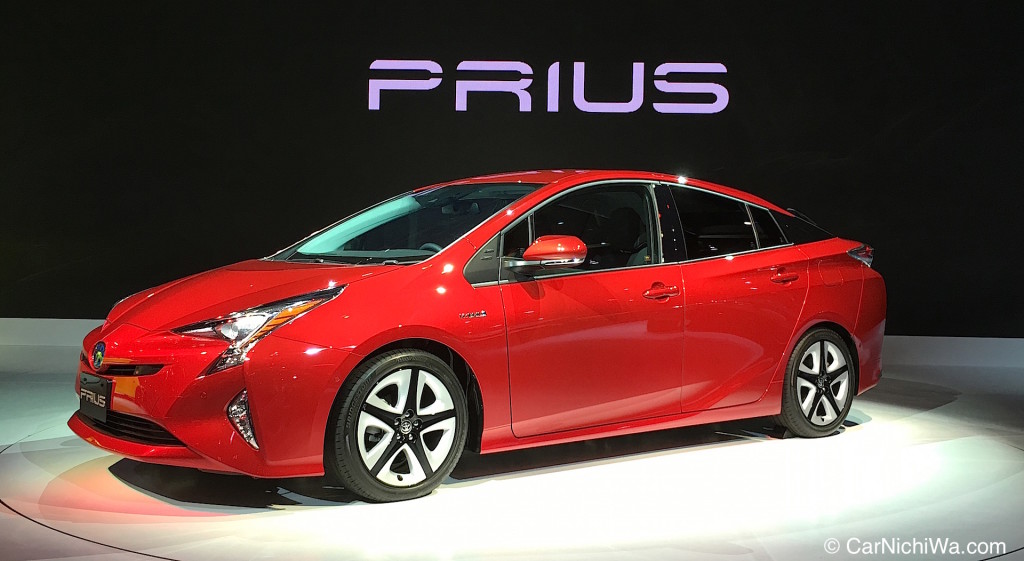 Toyota also displayed the new generation Prius that made its debut in the U.S. Click here to read our story about the changes in store for the best-selling hybrid following its global reveal in Las Vegas. Toyota says the new Prius will go on sale in Japan at the end of 2015, and is scheduled for successive launches around the world.
Toyota also displayed the new generation Prius that made its debut in the U.S. Click here to read our story about the changes in store for the best-selling hybrid following its global reveal in Las Vegas. Toyota says the new Prius will go on sale in Japan at the end of 2015, and is scheduled for successive launches around the world.
In Japan, the Prius will feature the Toyota “Safety Sense P” active safety package, which combines four advanced safety functions. Toyota Safety Sense P includes a Pre-collision System which uses the combined monitoring power of millimeter-wave radar and monocular camera to detect vehicles and pedestrians.
Toyota designers must have been channeling Steam Punk when they designed this wild new concept called KIKAI. We tried to stay still and curb our “wows” while taking this video so you can get an idea of what it looks like up close.
Toyota says that “as the products of human creativity, dedication, and knowledge, machines should be objects of admiration.” This concept was designed to “explore and emphasize the fundamental appeal of machines: their fine craftsmanship, their beauty, simplicity, and their fascinating motion.”
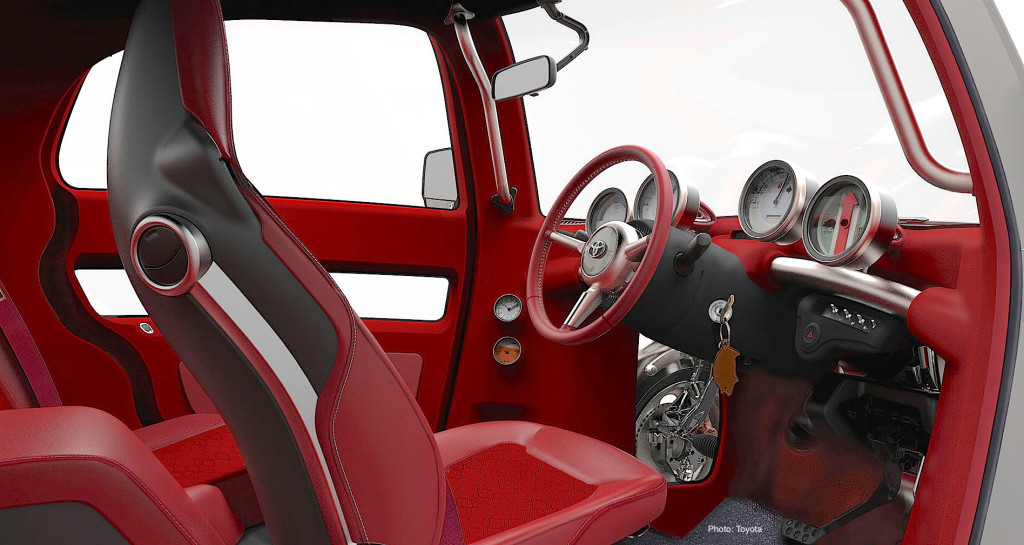 This concept takes the machinery, normally hidden beneath the vehicle body, and makes an open display of its beauty. Toyota says that directly expressed in this way, the vehicle’s inner workings become part of the exterior. In addition to the carefully designed form, continued into details including the fuel tank, reserve tank, and exhaust pipes, the analog-style meters and switches “offer an engaging dialog with the machinery.”
This concept takes the machinery, normally hidden beneath the vehicle body, and makes an open display of its beauty. Toyota says that directly expressed in this way, the vehicle’s inner workings become part of the exterior. In addition to the carefully designed form, continued into details including the fuel tank, reserve tank, and exhaust pipes, the analog-style meters and switches “offer an engaging dialog with the machinery.”
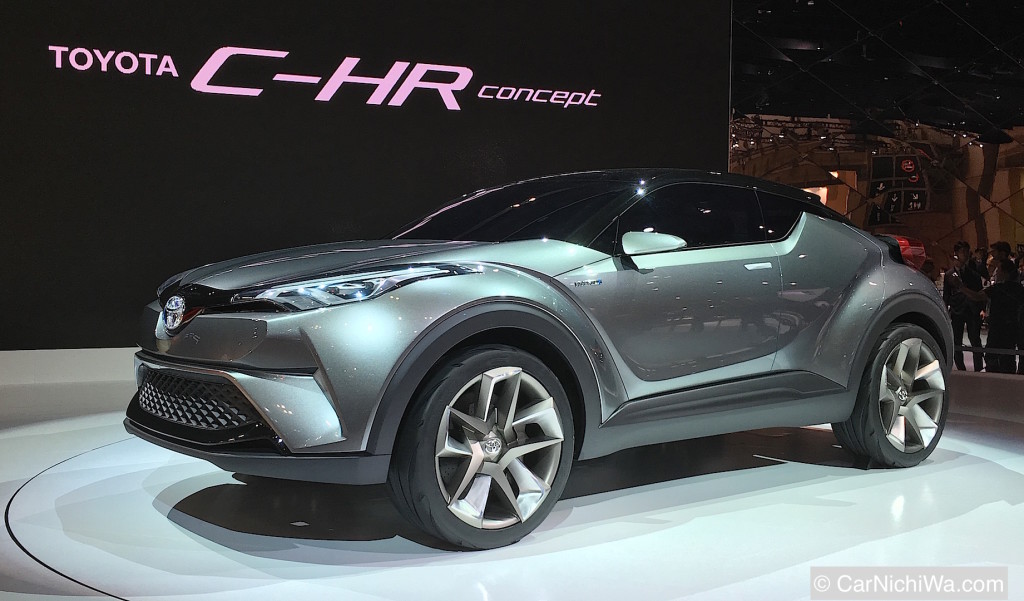 Toyota’s C-HR concept made its first appearance at the 2014 Paris Motor Show as a design study, with an updated five-door model displayed at the 2015 Frankfurt Motor Show. Toyota says it hopes to show a production-ready model at the Geneva International Motor Show in March 2016.
Toyota’s C-HR concept made its first appearance at the 2014 Paris Motor Show as a design study, with an updated five-door model displayed at the 2015 Frankfurt Motor Show. Toyota says it hopes to show a production-ready model at the Geneva International Motor Show in March 2016.
C-HR uses TNGA (Toyota New Global Architecture), resulting in a highly rigid body. “As a result of efforts to improve handling stability and ride comfort, the vehicle responds to driver handling with a directness that gives the driving experience an intuitive feel,” says Toyota.
Join us in this video as we take a quick tour of the Toyota display at this year’s Tokyo Motor Show.
What does Toyota do for an encore to the Mirai? It introduces a concept that takes a wild look into the future of FCVs. Toyota says that compressed hydrogen has a higher energy density than electricity, can be generated from a wide range of raw materials, and is easy to store, making it a promising future energy source. That’s why Toyota envisions a sustainable society in which hydrogen energy is in widespread use – a society embodied by this new FCV Plus.
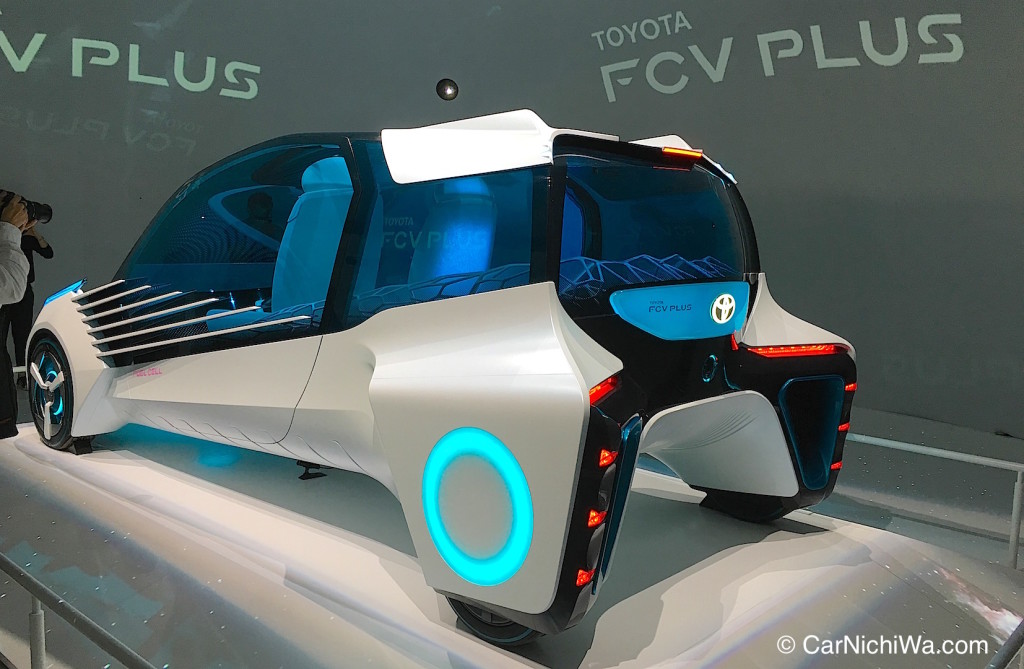 In addition to the concept’s own hydrogen tank, it can also generate electricity directly from hydrogen stored outside the vehicle. FCV Plus can thus be transformed into a stable source of electric power for use at home or away, says the automaker.
In addition to the concept’s own hydrogen tank, it can also generate electricity directly from hydrogen stored outside the vehicle. FCV Plus can thus be transformed into a stable source of electric power for use at home or away, says the automaker.
When the car is not being used as a means of transport, it shares its power generation capabilities with communities as part of the local infrastructure. The car’s fuel cell stack can be reused as an electricity generating device, transcending the traditional functions of cars. Put to versatile uses around the world, these stacks could contribute significantly to local communities says Toyota.
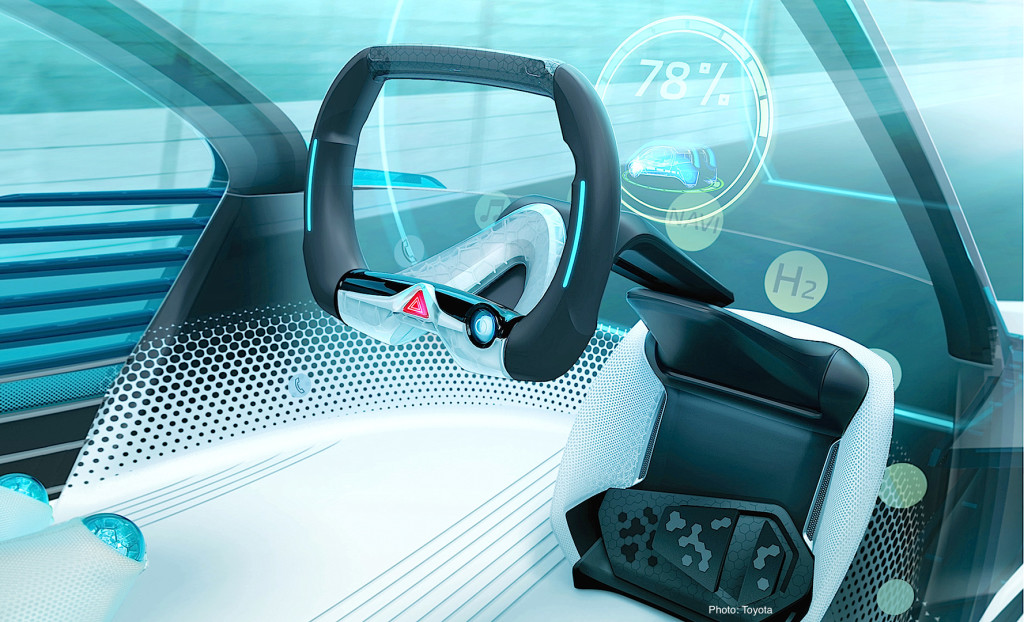 The fuel cell stack is mounted between the front tires, and the hydrogen tank behind the rear seat. “Together with the adoption of independent in-wheel motors in all four wheels, this allows for a spacious cabin despite the vehicle’s compact body,” says Toyota. “By concentrating functional parts at the front and the rear of the vehicle, this next-generation fuel cell vehicle package creates an optimal weight balance and a wide field of vision.”
The fuel cell stack is mounted between the front tires, and the hydrogen tank behind the rear seat. “Together with the adoption of independent in-wheel motors in all four wheels, this allows for a spacious cabin despite the vehicle’s compact body,” says Toyota. “By concentrating functional parts at the front and the rear of the vehicle, this next-generation fuel cell vehicle package creates an optimal weight balance and a wide field of vision.”
Visit the links below for our additional stories:
2015 Tokyo Motor Show Part 2 – Daihatsu, Mazda, Mitsubishi, Subaru and Suzuki
2015 Tokyo Motor Show Part 3 – BMW, DS, Mercedes-Benz, Mini and Porsche
2015 Tokyo Motor Show Part 4 – Toyota Auto Body, Yamaha and Smart Mobility City
Story, photos (as noted) and videos © 2015 CarNichiWa.com
Additional photos (as noted) courtesy of Tokyo Motor Show, Honda, Lexus and Toyota